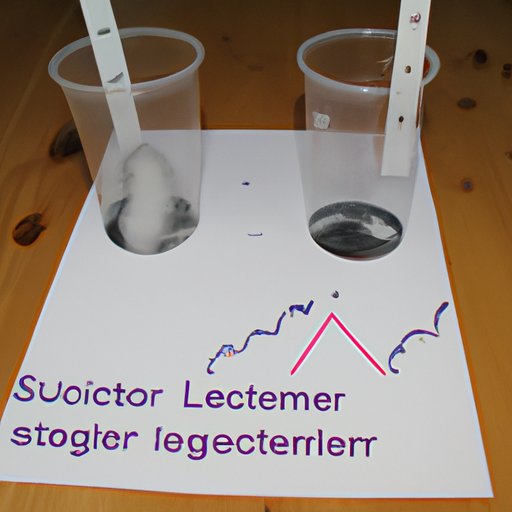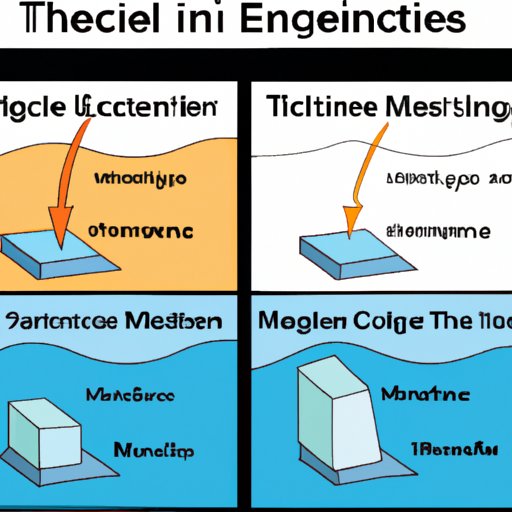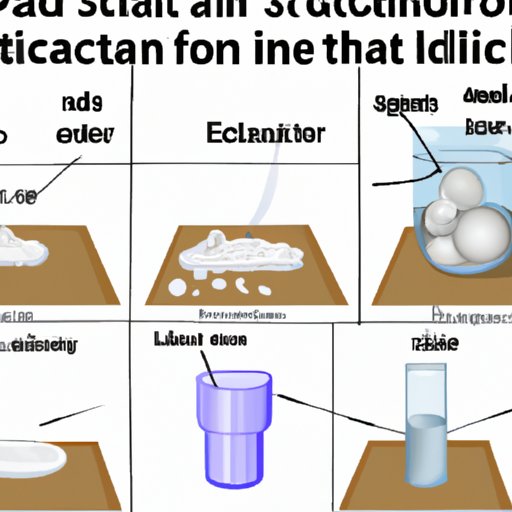Introduction
Ice melting science projects are a great way to explore the science behind why ice melts. They can help kids understand the impact of different variables on the rate at which ice melts and uncover the secrets of quicker ice melting. By completing an ice melting science project, kids can gain a better understanding of the science behind what makes ice melt faster.
Exploring the Science Behind What Makes Ice Melt Faster
When it comes to ice melting, there is a lot of science involved. The first and most important factor to consider is temperature. Heat is the main source of energy needed to break down the bonds between water molecules in ice, causing it to melt. This process is called endothermic reaction, which means that it takes energy from its surroundings to break down the bonds. So, the higher the temperature, the faster the ice will melt.
In addition to temperature, salt and other substances can also affect the rate at which ice melts. Salt lowers the freezing point of water, which means that it requires less energy to break down the bonds and cause the ice to melt. Other substances such as sugar and alcohol can also have a similar effect on the melting rate of ice. For example, according to a study published in the journal Nature Communications, adding a small amount of ethanol to water can decrease the melting temperature by up to 10 degrees Celsius.
Other variables that can impact the rate at which ice melts include air pressure, humidity, and wind. High air pressure and low humidity can decrease the melting rate of ice, while high wind can increase the rate at which it melts. Additionally, the shape and size of the ice can also affect the melting rate. Larger pieces of ice take longer to melt than smaller pieces because they contain more water molecules, which require more energy to break apart.

Investigating the Factors That Affect Ice Melting Speed
One way to explore the factors that affect ice melting speed is to conduct experiments. Kids can measure the effects of different variables on the rate at which ice melts by using simple tools such as thermometers, timers, and scales. They can also observe the effects of different substances on the melting rate by adding them to the ice and measuring the time it takes for the ice to melt.
By conducting these experiments, kids can learn about the science behind what makes ice melt faster and gain a better understanding of the factors that affect the melting rate. They can also develop their problem-solving skills by creating hypotheses and testing them with their experiments.
Uncovering the Secrets of Quicker Ice Melting
To complete an ice melting science project, kids need to gather a few materials. These include ice cubes, a container to hold the ice (such as a bowl or tray), a timer, and any substances they want to test (such as salt or sugar). They also need thermometers to measure the temperature of the ice and a scale to measure the amount of substances they add.
Once they have gathered all the materials, kids can begin their experiment. They can start by placing the ice cubes in the container and setting the timer. Then, they can add different substances to the ice and measure the amount of time it takes for the ice to melt. They can also measure the temperature of the ice before and after the experiment to see how it changes over time.

Examining the Reasons Ice Melts Quickly
Kids can also investigate the reasons why ice melts quickly by conducting experiments. They can measure the effects of heat, salt, and other substances on the melting rate of ice. They can also measure the effects of different variables such as air pressure, humidity, and wind on the rate at which ice melts.
By conducting these experiments, kids can gain a better understanding of how different variables affect the melting rate of ice. They can also discover the secrets of quicker ice melting and learn how to create their own ice melting science project.

Understanding How Different Variables Impact Ice Melting Time
Different variables can have a significant impact on the melting rate of ice. Temperature is the most important factor, as it determines the amount of energy needed to break down the bonds between water molecules. Other variables such as air pressure, humidity, and wind can also affect the rate at which ice melts.
Kids can measure the effects of these variables on the rate at which ice melts by conducting experiments. They can measure the temperature of the ice before and after the experiment and observe the effects of different substances on the melting rate. By doing so, they can gain a better understanding of how different variables impact the melting time of ice.
Analyzing the Effects of Heat, Salt, and Other Substances on Ice Melting Speed
Heat, salt, and other substances can significantly affect the melting rate of ice. Heat is the main source of energy needed to break down the bonds between water molecules, while salt and other substances can lower the freezing point of water, making it require less energy to melt. Kids can measure the effects of these substances on the rate at which ice melts by conducting experiments.
For example, they can add different amounts of salt or sugar to ice cubes and measure the time it takes for the ice to melt. They can also measure the temperature of the ice before and after the experiment to see how it changes over time. By doing so, they can gain a better understanding of how heat, salt, and other substances affect ice melting speed.
Conclusion
An ice melting science project is a great way for kids to explore the science behind what makes ice melt faster. They can investigate the factors that affect ice melting speed, uncover the secrets of quicker ice melting, and measure the effects of heat, salt, and other substances on the melting rate of ice. By completing this project, kids can gain a better understanding of the science behind ice melting and develop their problem-solving skills.
So, if you’re looking for a fun and educational activity for your kids, try an ice melting science project. They’ll have a blast exploring the science behind what makes ice melt faster and uncovering the secrets of quicker ice melting.
(Note: Is this article not meeting your expectations? Do you have knowledge or insights to share? Unlock new opportunities and expand your reach by joining our authors team. Click Registration to join us and share your expertise with our readers.)
